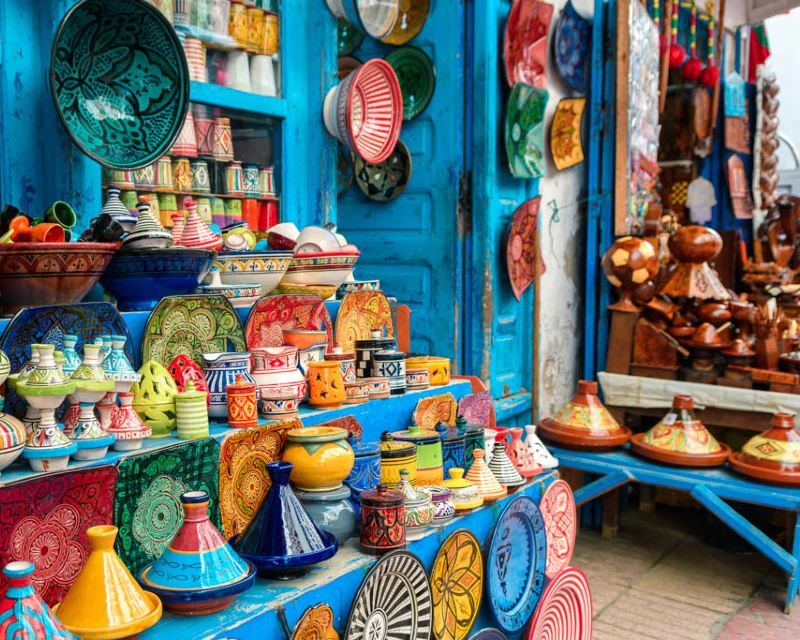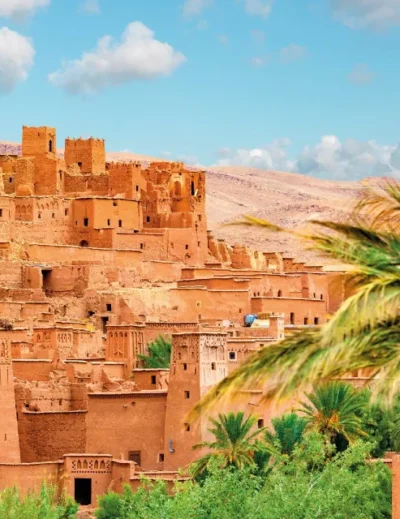
What to buy in Morocco
Shopping in Morocco is an artisanal connoisseur’s dream. Every souk and medina has an endless array of high-quality handmade goods that you won’t find anywhere else. Here’s a list of unique gifts and souvenirs to buy in Morocco.
Argan Oil
Argan oil is Morocco’s “liquid gold,” and leaving the country without a bottle is almost unheard of. It comes in two varieties: a cosmetic oil that works wonders for hair and skin hydration and a culinary version that’s packed with antioxidants and flavour. The cosmetic argan oil has a mild, nutty scent while the culinary argan oil has a richer roasted aroma.
How to spot the best quality:
- Make sure it’s 100% pure and cold-pressed.
- It should be unscented.
- Usually stored in dark glass bottles to preserve its potency.
Ceramics and pottery
Moroccan ceramics are a must-buy. The best pieces feature vibrant colours, and geometric designs that Morocco has come to be known for.
How to spot the best quality:
- Hand-painted pottery has intricate details and slight variations while the mass-produced versions look too perfect.
- It has a smooth, glazed finish and shouldn’t feel rough or chalky.
- It has a sturdy weight and cheap imitations usually feel light and fragile.
Spices
If you love cooking, Moroccan spices will take your dishes to another level. Every spice you can imagine can be found in the souks. Some of the best buys include Taliouine saffron, considered the highest quality in the world and Ras el Hanout, a spice blend used in tagines and couscous. Essential staples like cumin, cinnamon, turmeric, paprika, and dried herbs can also be bought.
How to spot the best quality:
- Saffron has deep red strands with a slightly moist texture. Avoid yellow/orange strands as they are fake.
- Spices should be aromatic, feel fresh and not stale.
Amlou
Amlou is a rich, nutty spread made from almonds, honey, and argan oil. It’s smooth, creamy, and slightly sweet. They can be spread on bread, biscuits, or anything you’d typically put butter on.
How to spot the best quality:
- It should have a thick, smooth texture. Fake versions are too oily or grainy.
- The main ingredient should be almonds, not added sugars or cheap oils.
RELATED: Everything to know before travelling to Morocco with a Nigerian passport
Leather goods
Moroccan leather is world-famous, and Fez’s tanneries produce some of the best. Whether you’re looking for bags, belts, slippers (babouches), or poufs, the quality of Moroccan leather is one of one.
How to spot the best quality:
- Real Moroccan leather has a soft, supple feel that improves over time.
- The smell should be natural and slightly earthy
Berber carpets and rugs
Moroccan Berber carpets are handwoven by Amazigh artisans using natural wool and traditional techniques.
How to spot the best quality:
- High-quality wool feels soft yet dense.
- Natural dyes give them a rich but not overly bright colour.
Tagine cookware
The tagine is a two-piece traditional cookware native to Morocco. It’s used for slow-cooked Moroccan dishes. These pots made with clay or ceramic enhance the flavours of the dishes they are cooked with.
How to spot the best quality:
- Unglazed clay tagines are best for cooking while glazed ones are decorative.
- They should feel heavy and sturdy









Leave a Reply